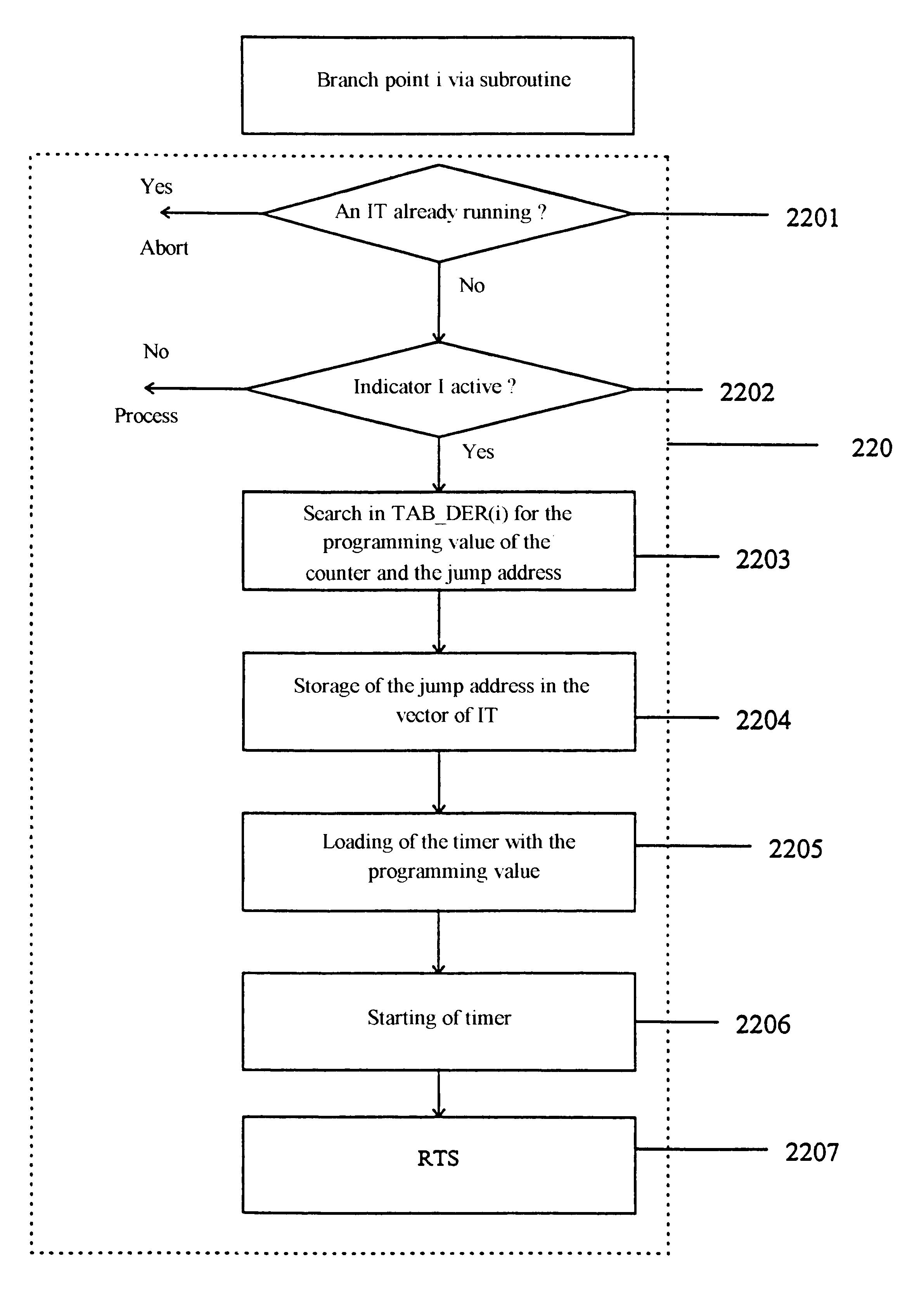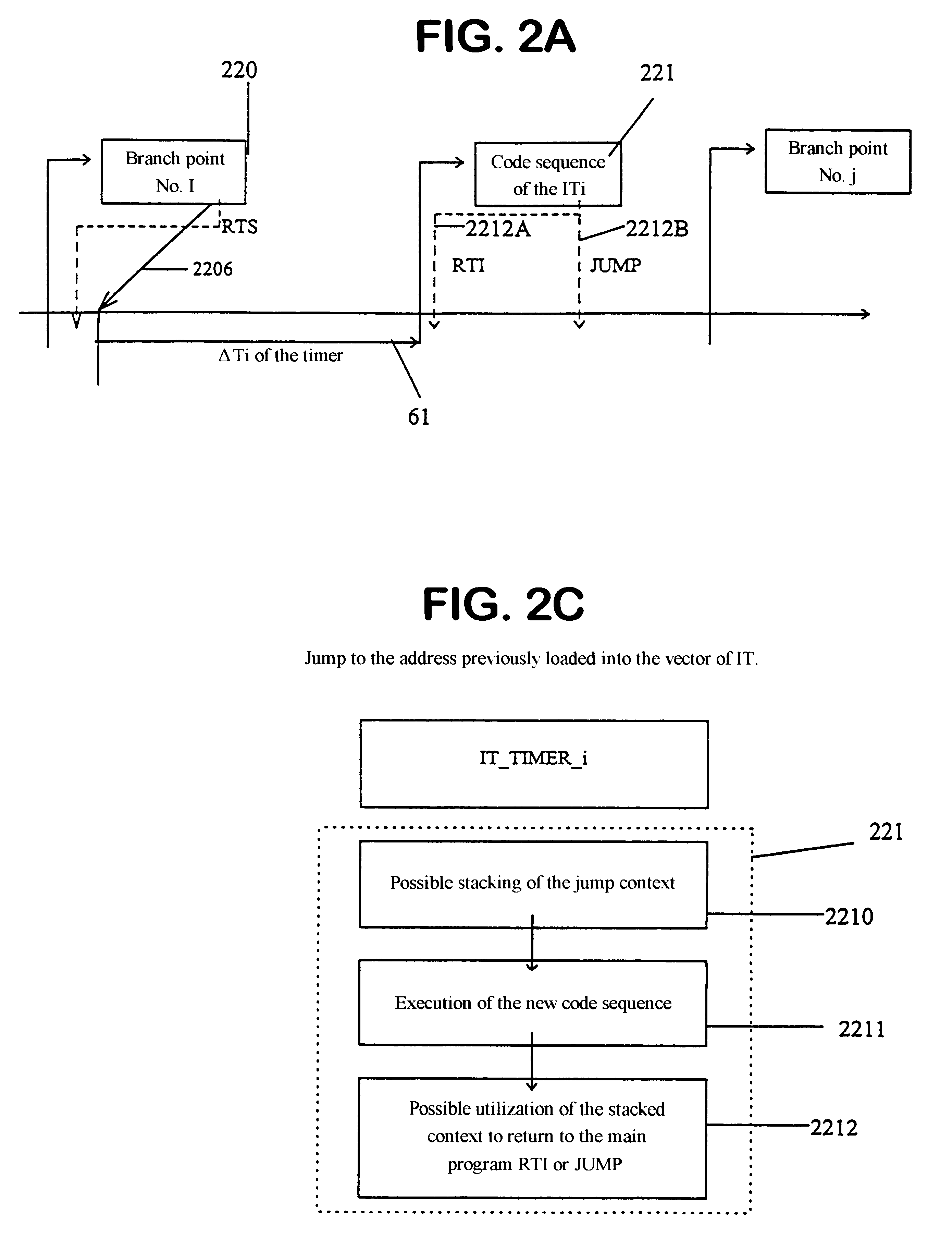Method for modifying code sequences and related device
a technology of code sequences and modifying methods, applied in the field of process for modifying code sequences, can solve the problems of loss of flexibility of embodiments, high cost of operation, and large drawbacks of multiple points, and achieve the effect of correct running and easy addition of functionalities
- Summary
- Abstract
- Description
- Claims
- Application Information
AI Technical Summary
Benefits of technology
Problems solved by technology
Method used
Image
Examples
Embodiment Construction
)
The present invention will now be explained with the aid of an example that falls within the scope of "chip cards" and more specifically microprocessor cards. These cards generally have an integrated circuit whose general diagram is represented in FIG. 1. This circuit has a central processing unit (1) connected by an address and data bus to a nonvolatile memory, for example of the ROM type (2) containing the main program, a programmable nonvolatile memory of the EEPROM type (3), a working memory RAM (4), an input-output interface I / 0 (5) and a timer (6). The timer can generate an interrupt, thus interrupting the normal operation of the program run by the central processing unit. The interrupt is associated with a vector. The latter is the start address of the interrupt routine. It is the address of the first instruction of the sequence that handles the interruption. A means for inhibiting the interrupt, which may be integrated with or external to the timer, makes it possible to del...
PUM
 Login to View More
Login to View More Abstract
Description
Claims
Application Information
 Login to View More
Login to View More - R&D
- Intellectual Property
- Life Sciences
- Materials
- Tech Scout
- Unparalleled Data Quality
- Higher Quality Content
- 60% Fewer Hallucinations
Browse by: Latest US Patents, China's latest patents, Technical Efficacy Thesaurus, Application Domain, Technology Topic, Popular Technical Reports.
© 2025 PatSnap. All rights reserved.Legal|Privacy policy|Modern Slavery Act Transparency Statement|Sitemap|About US| Contact US: help@patsnap.com



